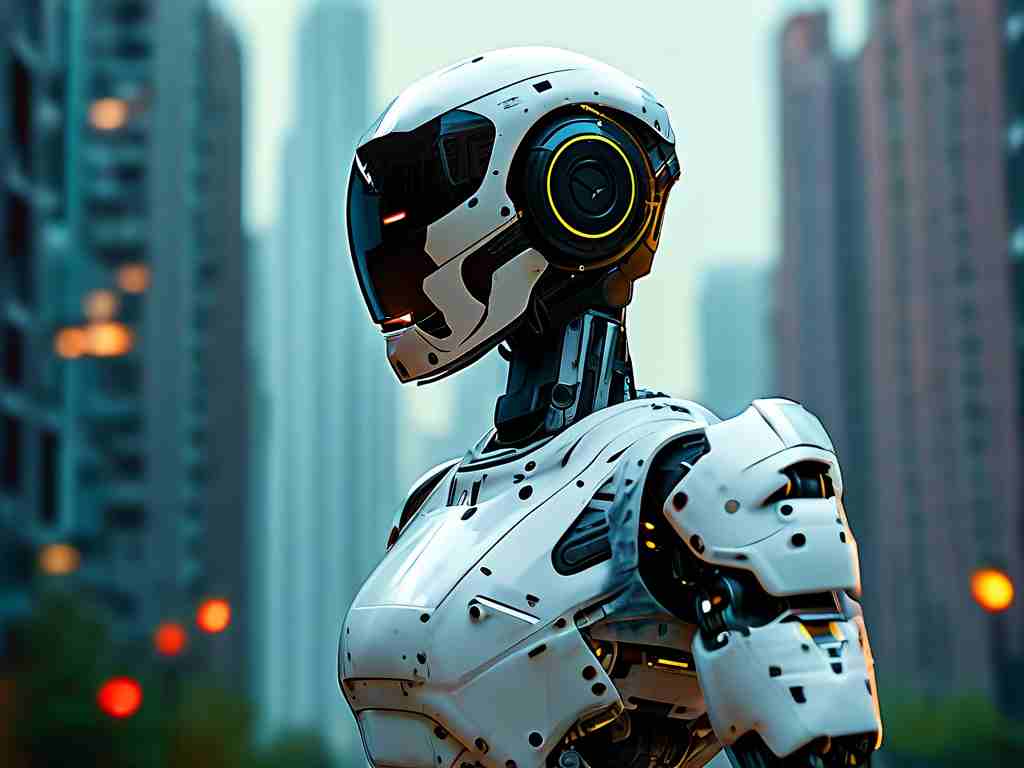The distant whir of motors, the subtle shift of balance, the precise movement mimicking a surgeon's tremor – not in an operating room, but thousands of miles away. This is the tangible reality unlocked by robotic avatar technology, a frontier rapidly shifting from science fiction to transformative tool. These sophisticated machines, acting as physical extensions of human operators, are poised to dismantle geographical barriers and redefine presence in fields demanding dexterity, expertise, and physical interaction.

At its core, robotic avatar technology creates a symbiotic link between a human operator and a remotely located robot. The human, equipped with specialized interfaces – ranging from sophisticated VR headsets and haptic gloves to simpler control panels – perceives the robot's environment through cameras, microphones, and other sensors. Their movements, gestures, and commands are captured, transmitted over networks (often low-latency 5G or dedicated fiber), and replicated by the robot with remarkable fidelity. Advanced systems incorporate force feedback, allowing the operator to "feel" the resistance of a grasped object or the texture of a surface. This bidirectional flow of sensory information and motor control creates an unparalleled sense of "telepresence," making the operator feel genuinely embodied within the remote robot.
The implications for specialized fields are profound. Consider complex surgery: a leading specialist in Tokyo could guide a robotic avatar through a delicate procedure in a rural clinic in South America, leveraging their unique skills without the constraints of travel time, jet lag, or visa issues. The robot's steady "hands" eliminate natural tremors, while the surgeon experiences the procedure visually and haptically as if physically present. Similarly, in hazardous environments like deep-sea maintenance, nuclear decommissioning, or disaster response, robotic avatars allow human experts to conduct intricate repairs or assessments from the safety of a control center. They can withstand extreme pressures, temperatures, and radiation levels lethal to humans, while the operator retains the critical judgment and adaptability only a human possesses.
Beyond high-stakes applications, the technology promises to democratize access and enhance collaboration. Imagine a world-renowned professor physically interacting with students in multiple international classrooms simultaneously via robotic avatars, conducting hands-on experiments or providing personalized guidance. Field researchers in remote archaeology sites or deep jungle ecosystems could receive real-time, on-site expertise from senior colleagues located continents away. Industrial maintenance engineers could troubleshoot complex machinery in factories worldwide without leaving their headquarters, significantly reducing downtime and travel costs. The potential for remote expert intervention transforms how specialized knowledge is disseminated and applied globally.
However, the path to ubiquitous robotic avatars is paved with significant technical hurdles. Achieving truly seamless, real-time interaction demands ultra-low latency communication networks. Delays of even a few hundred milliseconds between an operator's action and the robot's response, or vice-versa, can break immersion, cause operator disorientation, and lead to errors, especially in tasks requiring fine motor skills. Current network infrastructure, even with 5G advancements, often struggles to guarantee the consistently ultra-low latency required across vast distances. Furthermore, replicating the full spectrum of human senses – particularly nuanced touch and proprioception (the sense of body position) – remains a formidable engineering challenge. While basic force feedback exists, conveying texture, temperature gradients, or the precise weight and fragility of an object is incredibly complex. Powering these sophisticated machines for extended durations in remote locations is another persistent obstacle. Battery technology limitations necessitate frequent recharging or complex tethering solutions, hindering true operational freedom. The computational power required for real-time sensor processing, AI-assisted movement smoothing, obstacle avoidance, and high-fidelity rendering of the remote environment back to the operator is immense, demanding robust and often localized processing capabilities.
Beyond the technical, ethical and societal questions loom large. Establishing clear legal frameworks for liability is paramount – if a robotic avatar controlled by an operator in another country causes harm or damage during a task, where does responsibility lie? With the operator, the robot manufacturer, the network provider, or the company deploying the system? Robust cybersecurity is non-negotiable; the potential consequences of a malicious actor hijacking a surgical avatar or an industrial robot are terrifying. Ensuring equitable access to avoid exacerbating global inequalities is crucial; will this technology primarily benefit wealthy nations and corporations, or can mechanisms be developed to make it accessible for critical needs in developing regions? The psychological impact on operators experiencing potentially traumatic events remotely through an avatar, or on individuals interacting with these machines, also requires careful study.
Despite these challenges, the trajectory is clear. Investment from tech giants, specialized startups, and research institutions worldwide is accelerating. Advances in AI, particularly in computer vision for better environmental understanding and predictive movement, are enhancing avatar autonomy for simpler tasks, reducing operator cognitive load. Materials science is yielding lighter, stronger, and more dexterous robotic limbs. Progress in neuromorphic computing and brain-computer interfaces (BCI) hints at a future where control could become even more intuitive, perhaps bypassing traditional interfaces altogether. While mainstream consumer applications might be further off, the enterprise and specialized professional sectors are witnessing rapid adoption.
Robotic avatar technology is not about replacing humans; it's about radically extending human capability and presence. It promises to transcend the limitations of physical location, allowing human skill, empathy, and judgment to be projected instantly across the globe, into environments previously inaccessible or too dangerous. As the intricate dance of sensors, actuators, AI, and networks continues to refine, the boundary between "here" and "there" will continue to blur. The era of physically embodied telepresence has dawned, and its potential to reshape industries, education, healthcare, and exploration is only beginning to be realized. The whir of the avatar is the sound of a frontier collapsing.

